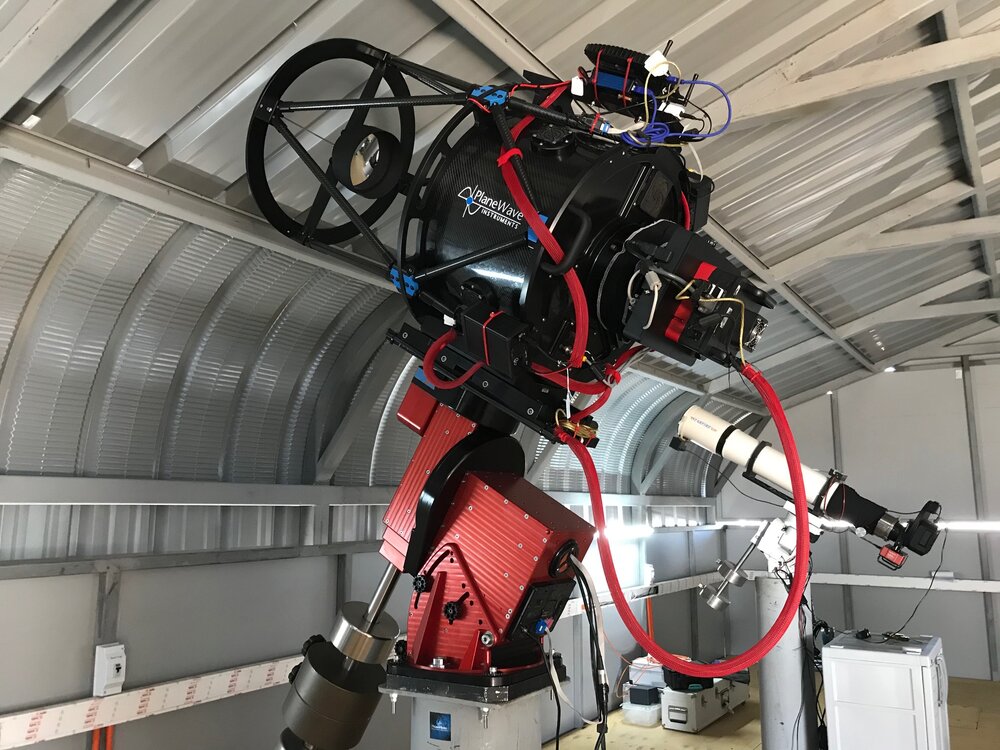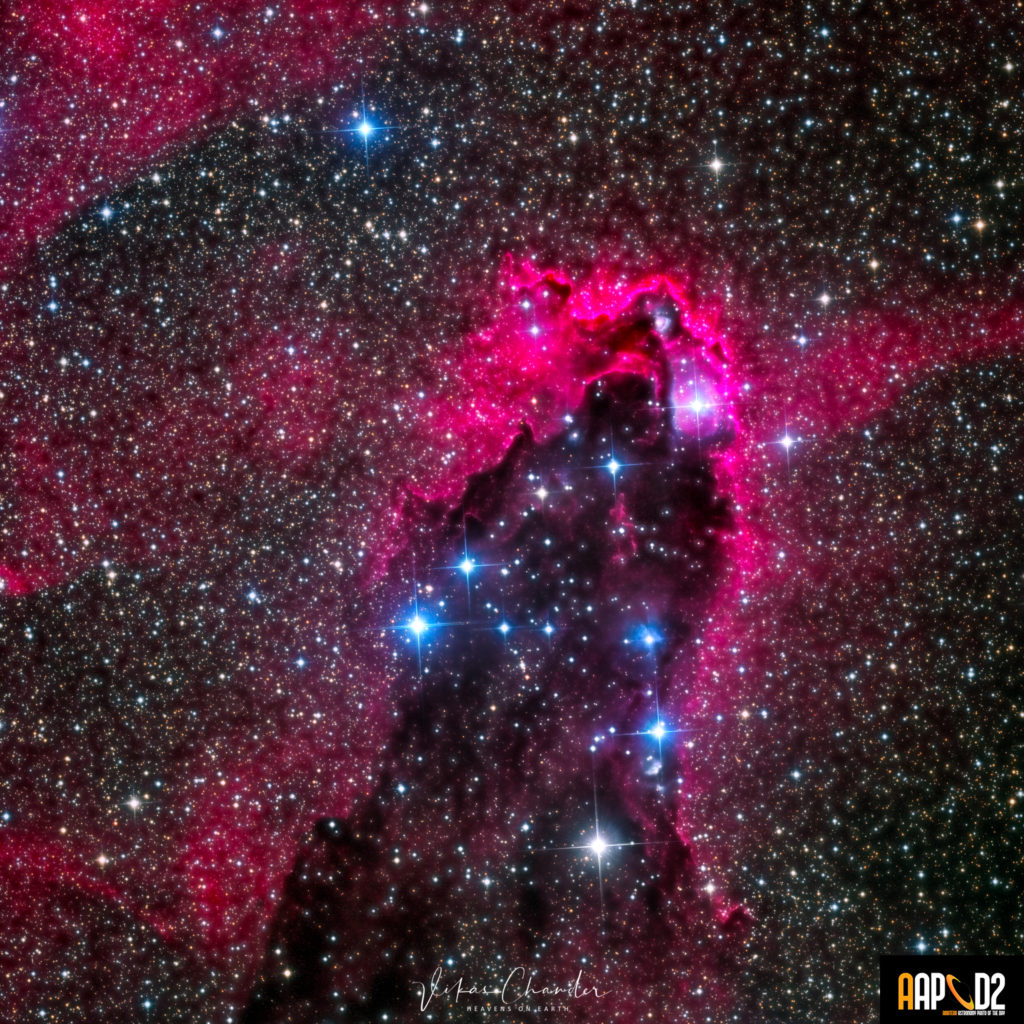Telescope : Planewave CDK 17 F6.8
Camera : SBIG STXL 11002
Mount: Software Bisque Paramount ME
Pixel scale : 0.63 arcsec/pixel
FOV : 42 x 29 arcmins
Filters : HaLRGB
Integration: 27h40m
Ha 14x30m
L 18x20m R 15x20m G 15x20m B 14x20m
RA center: 16h 46′ 57″
DEC center: -41° 11′ 37″
Equipment : Martin Pugh
Location : El Sauce Chile
Software: PixInsight & Photoshop

An ominous dark nebula rises against the a bright star field and glowing gasses, alongside the tail of the Scorpius constellation. The structure spans almost 40 light years and dust and gas collapse to form stars within this dark nebula. Also known as a cometary globule, the cloud is shaped by ultraviolet radiation from the very hot stars in NGC 6231. The ultraviolet light also illuminates the reddish glow of hydrogen gas. Hot stars embedded in the dust can be seen as bluish reflection nebulae. This dark nebula, NGC 6231, and associated nebulae are about 5,000 light-years away.

